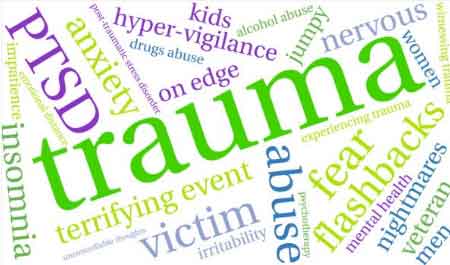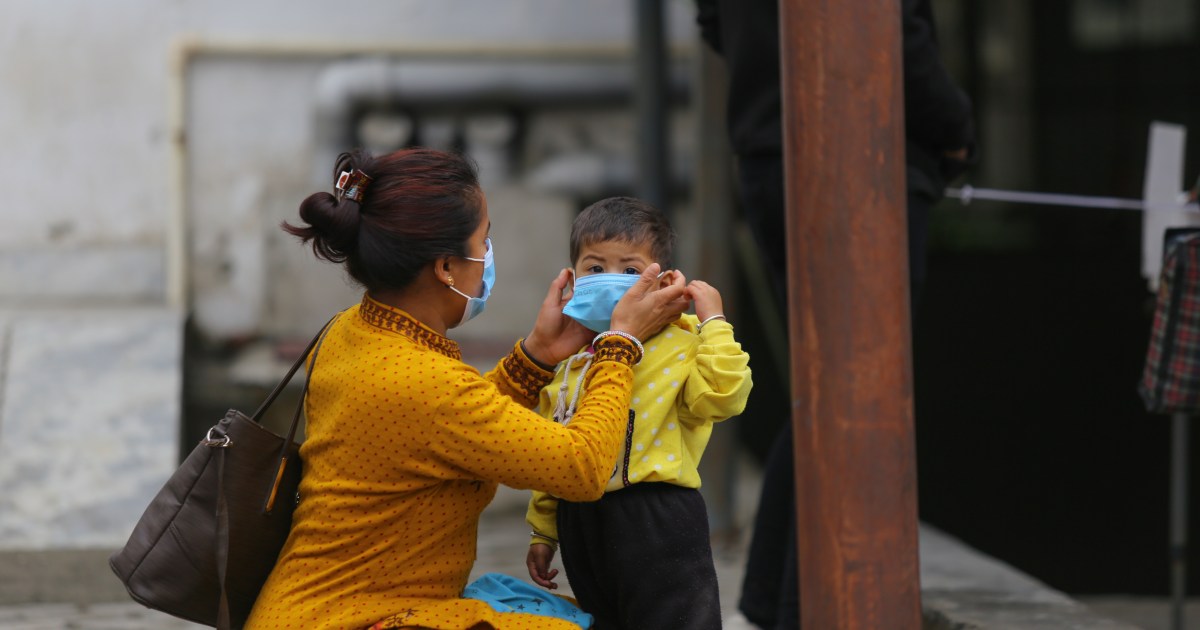Can You Get PTSD From Watching a Traumatic Event Online
Almost everyone who has access to the internet through their mobile phones has seen one or more gory videos of accidents, murders, or any other violent crime. The internet is filled with these videos, they are not on the dark web, they are on Facebook, Twitter, and other social media platforms. And more and more people, young and old are getting access to these videos.
Can you get PTSD from watching a traumatic event online? Absolutely, YES! Experiencing the death of someone online or watching other traumatic events online can trigger audiovisual stimulus which can enhance symptoms of posttraumatic stress (PTSD). This is very common to people who have a strong phobia for blood and seeing tragic events.
Recent studies have indicated that viewing disturbing, traumatic, tragic, or violent scenes online could lead to the development of the phenomenon called Vicarious Trauma.
There are a lot of websites that take it upon themselves to make sure such disturbing content go round online, and terror organizations now favor broadcasting their executions because it serves their objective which is to terrorize their target audience.
Do you recall your shock when you watched such a video?
How can a traumatic event like death lead to PTSD?
The first time I saw an online video of a violent murder I lost my appetite for food for two days. It was of soldiers in an African country shooting into a crowd of peaceful protesters.
At the time I believed my loss of appetite to be an ordinary reaction to the sight of blood, and my inability to sleep afterward as my fear of gunshots, and the opaque, mad eyes of soldiers carrying out their jobs like automatons.
It took me a while to diagnose my feelings as signs that I have PTSD from watching the video. Have I watched the video after that, or similar ones? Yes, for sure.
Did you find yourself not being able to look away from videos of this kind when they play? I have as well. The truth is that even though the public abhors the spread of these videos – not just the content – we continue to seek them out, watch them, and share them as well.
We hate it, but we love it. Or maybe we hate that we love it. Whatever the case may be, all indications point to the fact that the public outcry against the spread of such videos is a halfhearted attempt to appease the human side of us that feels pity and identifies with the victims we watch in those videos.
We will suffer the mental consequences, but we’d still watch the next new video, or revisit the last one.
What psychiatrists agree on
Some scientists think it is a primal thing about us humans.
PTSD afflicts almost half the population of people who view online violent deaths. A study showed that people who watched repeatedly videos of deadly events were more traumatized than those who witnessed the same events in real life.
An example is the violent beating to death of a 19-year-old girl named Serena McKay in Manitoba. Alma Kakikepinace, the woman who found the body said she barely slept, and couldn’t eat for days.
Ottawa forensic psychiatrist, Professor John Bradford developed a full-blown Post Traumatic Stress Disorder after he viewed video evidence on Russell Williams, a man who murdered two women in 2010 and recorded the act.
Videos have been found to have the power of affecting some people, living deep impressions on their minds more than it does those who saw the event happen live. These people suffer what some call Vicarious Trauma – trauma that they feel on behalf of the victim.
The risks associated with developing PTSD from watching deadly violence on-screen first came to the public’s notice when American drone pilots reported trauma after they released explosives as part of their duties.
A study was launched in 2013, and it was found that there’s no significant between the results of mental health diagnoses of pilots who flew real planes and did the same job as those who operated aircraft remotely.
Professor Bradford said the pilots started to exhibit serious cases of PTSD. It is now an accepted fact that people can get PTSD from watching someone die online, even though research is still in its earliest stages.
The Serena McKay case in Canada is also proof of this as students who attend the same school as the victim watched the live streaming of McKay’s death. Many of the kids were reported to show signs of severe Post Traumatic Stress Disorder.
How can watching someone die online lead to PTSD?
The phenomenon is called Vicarious Trauma.
This term is not new. Among health professionals, doctors and nurses, it is an indirect trauma that is defined as the transfer of violent traumatic experiences from a patient to someone in a helping capacity.
In a research published in the Journal of Depression and Anxiety, Pam Ramsden says that a majority of the public are being affected by the violent images and videos they see online and are affected by vicarious Trauma.
- When people see acts of violence in the videos, their sense of security is affected, assaulted
- It creates feelings of anger, fear, frustration, helplessness.
- Beholding a brazen act of violence against another human makes us feel attacked
- We feel anxious that if this can happen to the victim, get posted online, then it can happen to us as well.
We take the place of the victim, feel the sharp weapon against the flesh of our necks, or the icy cold barrel of the gun on our temples. Even after watching the video, we carry with us a residue of the helplessness that we witnessed in the victims, then we lose our appetite, can’t sleep at night.
Our brains interpret every rupture of order – no matter how minute – in our immediate environment as an imminent repeat of what we saw in the video online.
What to do to avoid vicarious PTSD
The work of researchers in curbing the menace of online violence is mitigated by the vast scape of the internet itself. It is almost impossible to do anything about online videos showing extreme violence.
Facebook for example regulates the sharing of these videos, but there are loopholes. If the said video is such that alerts the public to dangers, Facebook usually would let the video stay on. Of course, these videos would alert the public, serve as some sort of help to policing but we can not hide from the side effects of such videos.
But you can choose to not click on that video. You can choose to read about the event instead. Or you can choose to watch it, empathize with the victim without investing your emotions in what you see – though this may be difficult to achieve.
Some experts recommend limiting the amount of time spent on social media, this way you limit your exposure to mentally troubling media.
Social media owners are encouraged to put some restrictions in place to limit the live streaming of violent videos.
Adults are already at the threshold, the receiving end, only waiting to view what has been served on the internet, but the same may not entirely be true of their children.
Young children are handed mobile devices the moment they begin school now. Parents need to monitor their kids’ use of social media, be involved in their children’s consumption process, this way you can help stop them from viewing questionable videos.
Been able to achieve this is tricky, yes. But it is better than not doing anything. Some research has been done and helpful tips for parents to help their children’s use of social media are as follows:
- Don’t keep mute when in the presence of your children, violent videos are been shown. If you remain silent your kid may view this as an agreement by you that violence, as depicted in the video, is acceptable.
- Engage your kid in a discussion shortly after shutting off the violent video. Find out how he feels about it. What does he think of the families of the victim and perpetrator of the violence, how must they be feeling right now?
- Parents can explain to their children what the media sometimes do to manipulate the public into an undue frenzy, teach them about hoaxes and how to spot them. Teach them how to tell fake news from a real one. This helps them early on to put things in perspective when they stumble on real videos of violence.
- Teach children and young people who are now the major consumers of violent videos to learn to take a step back and consider the motives of those who share such videos, before clicking the share button. This involves a reasonable level of cynicism, yes.
- Set videos from playing automatically.
If you come upon a violent video, you can choose to not watch it, and if your settings are such that videos don’t play on their own as you scroll by, then the better for your mental health. It affords time for you to scrutinize the video by checking the caption for any indication that it is a video showing a live murder or not.
- You can use settings to block or filter inappropriate content.
- Talk to someone if you have watched a video that results in suffering PTSD. See a psychiatrist and be as open as you can about your feelings. Do not share the video, and if you have downloaded it on your device previously, be sure to delete it.
- Think of positive ways to use social media, and advocate such wholesome use.
- If by some mistake the settings you have put in place to filter violent videos does fail, and you get snatches of the violent content, or you could not look away. Try to understand the feelings that follow, do a personal analysis of the situation, and put things in perspective.
- Remind yourself that what you saw may be someone’s ploy to make you feel bad, chose peace. Feel empathy for the victim in the video but tell yourself that what happened in the video was out of your hands, there was no way you could have helped the person, and that the deed is done already.
- If you know anyone who’s experienced negative feelings from watching the online video showing someone being murdered, meet up with them if they are a workmate, classmate, or live in your neighborhood. Reassure them and ensure you are air of positivity around them.
Videos showing killings and others are so ubiquitous on the internet, consequently, the symptoms and signs of PTSD are so many. Treatments are varied depending on the particular patient.
Most PTSD patients are required to participate in Cognitive Behavioral Therapy – CBT. And alongside this treatment is CPT – Cognitive Processing Therapy.
BetterHelp has resources, therapists, and counselors who can help you deal with PTSD which is formed as a result of watching disturbing content online. It is important that you check-in as soon as you notice signs of trauma.
Final words
Since the advent of the TV and all other visual media, psychologists have sought to understand the effects and impact of visuals on the mind. Thankfully, psychologists are exploring new methods of dealing with PTSD.
The persisting dilemma is that what happens if social media entirely stops videos of violence from being shared? There are instances where live streams of killings have led to the capture of the perpetrator.
For example in the case of Russell Williams, the man recorded his crime, perhaps for later personal enjoyment, but it was this same tapes that indicted him. This same tape is available to researchers studying the patterns in men and women with similar criminal traits as the perpetrator.
It also appears too that the approach to the problem is still halfhearted. We may not see an end to the plague as long as we still have movies that glorify violence. The only difference here is, when you watch movies, you know what you’re seeing is not real.
Some researchers though say there is a thin line between what the movies portray and what happens in real life, and that these movies may be responsible for fueling violent crimes. In the end, it society is caught up in a merry-go-round with the issues.






